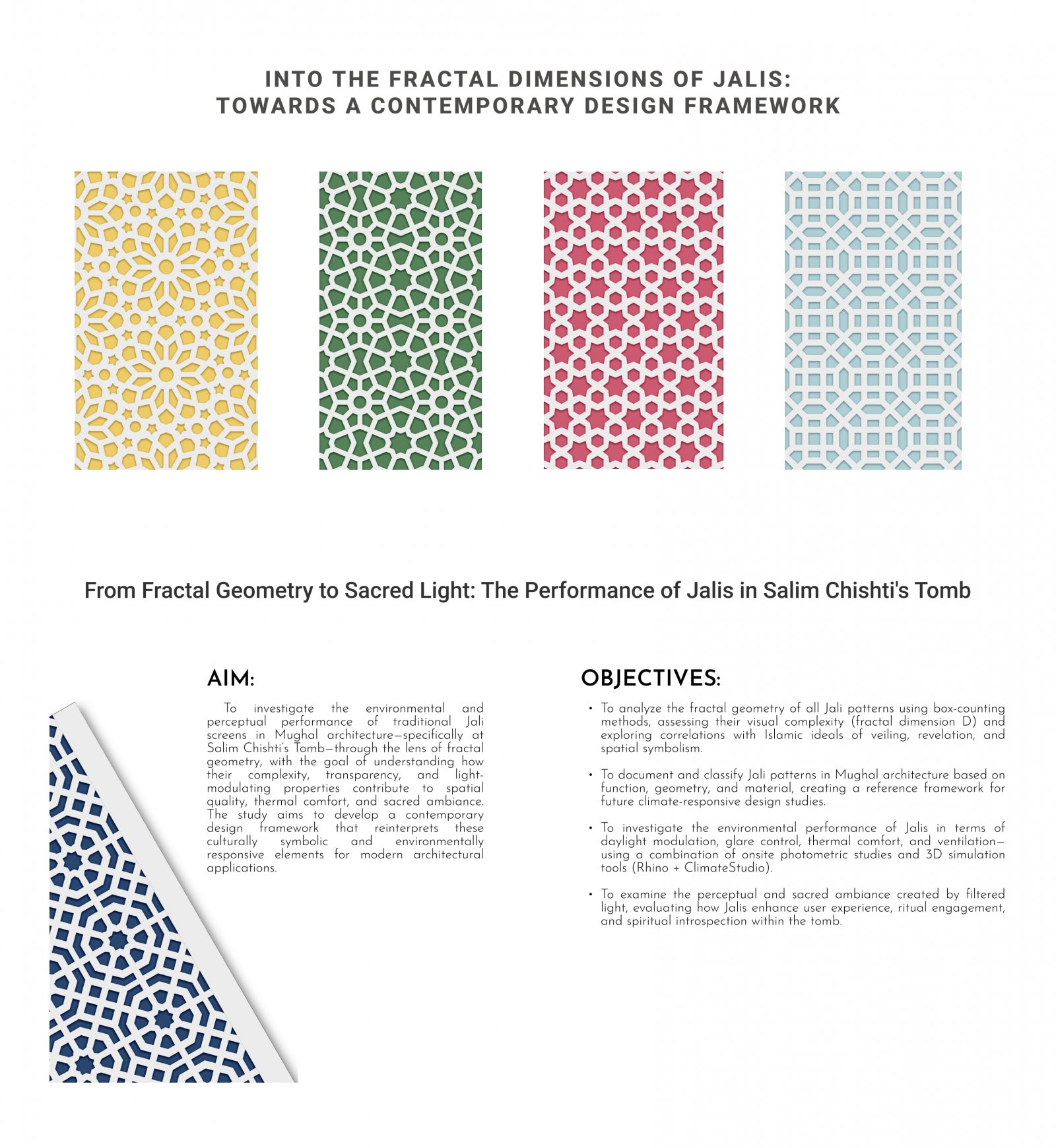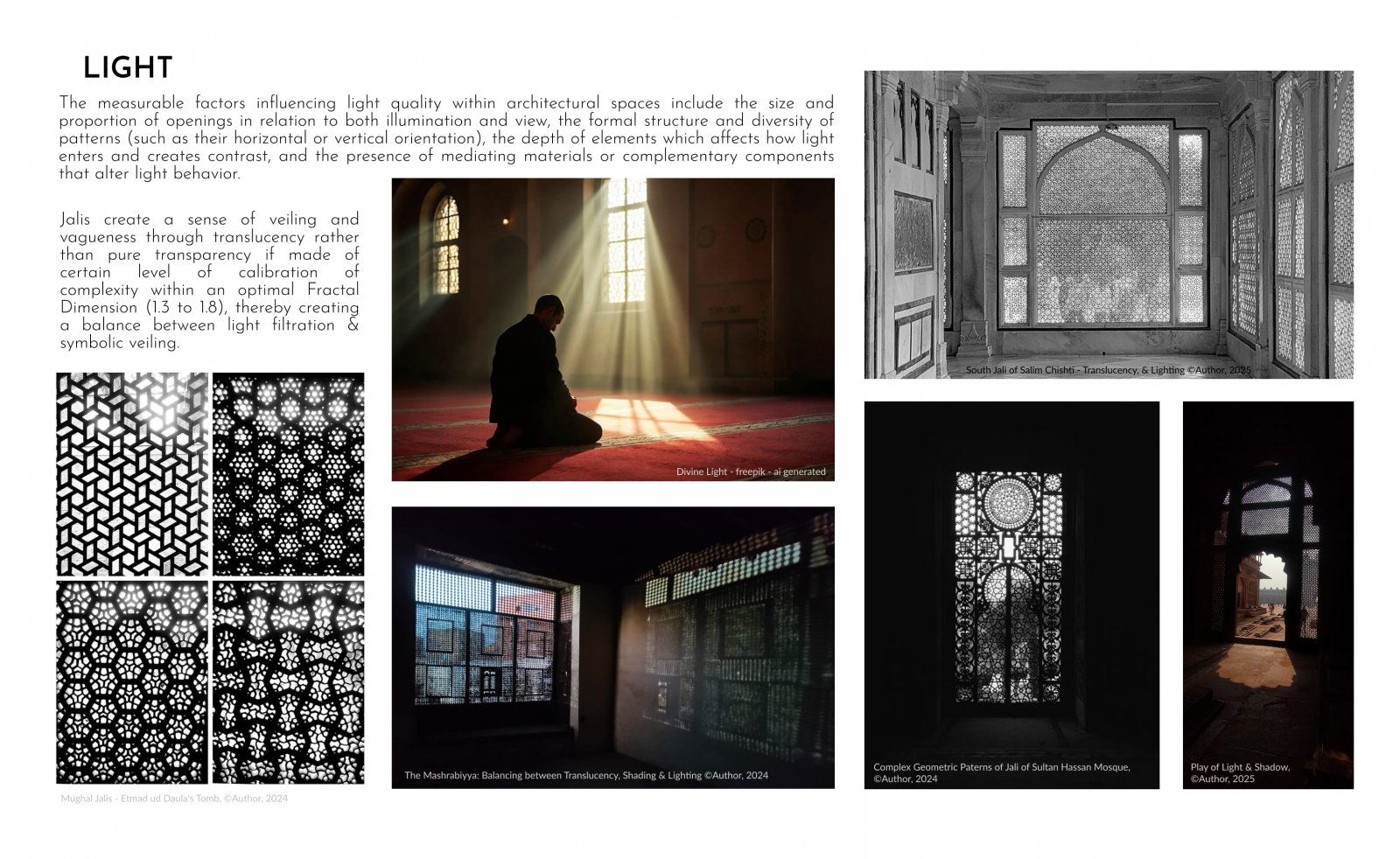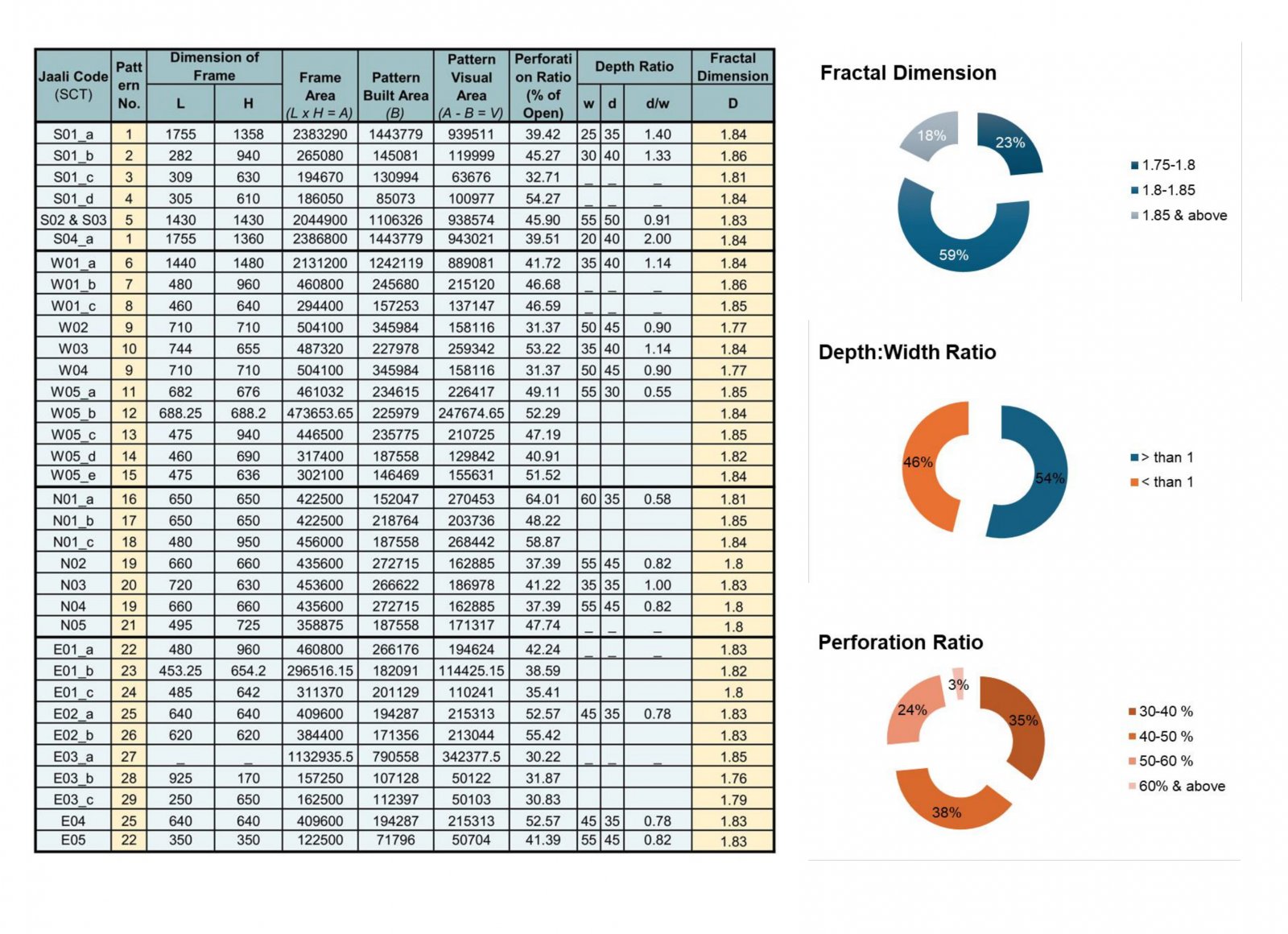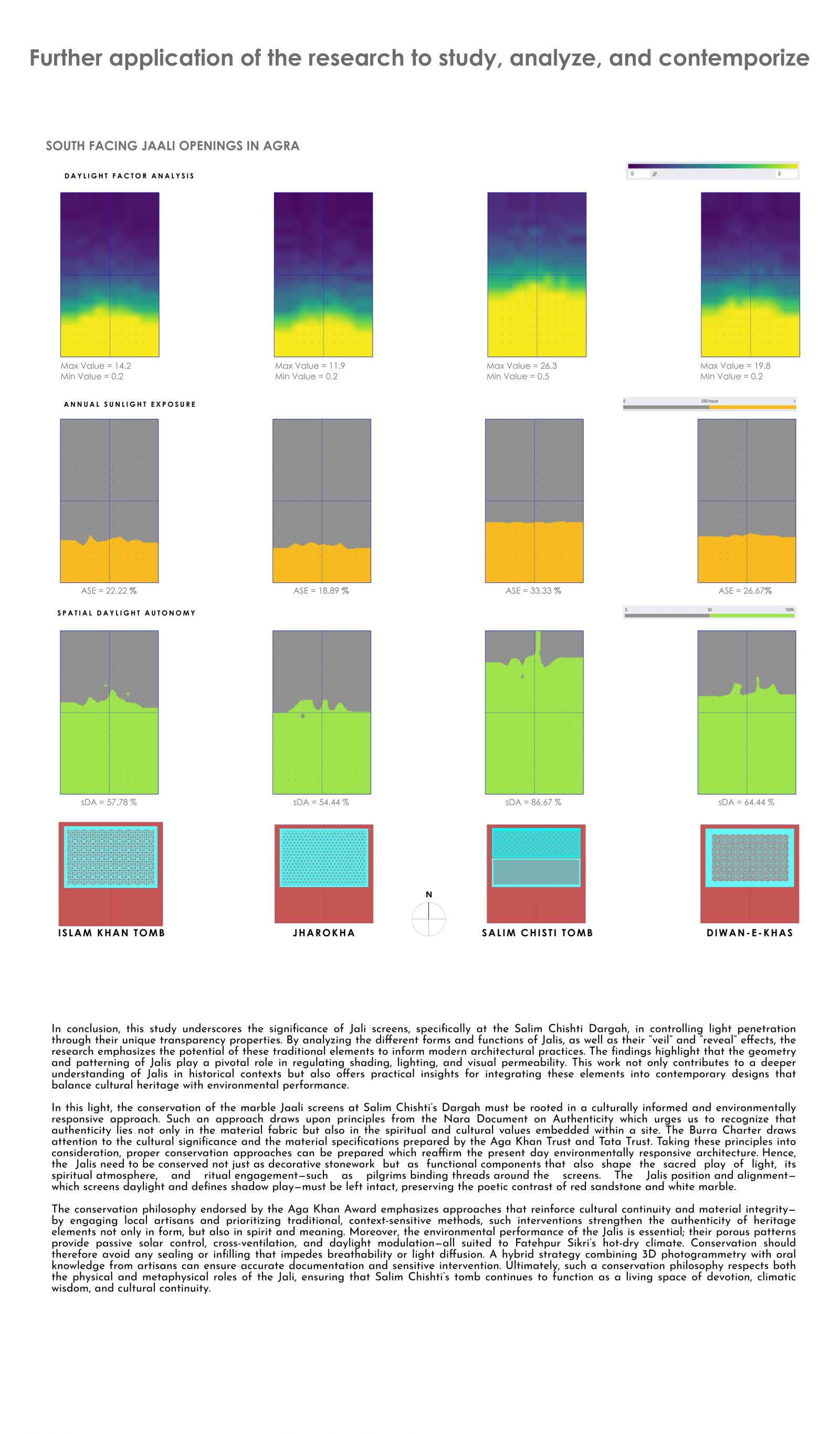Your browser is out-of-date!
For a richer surfing experience on our website, please update your browser. Update my browser now!
For a richer surfing experience on our website, please update your browser. Update my browser now!
This research explores how the Jali screens at Salim Chishti’s Tomb modulate daylight through their fractal geometry and transparency. By analyzing 3–5 traditional Jali patterns (mostly with D ? 1.8–1.9), the study evaluates their impact on light diffusion, glare control, and sacred spatial quality. Combining onsite photometric studies with 3D simulation (Rhino + ClimateStudio), it demonstrates how Jalis create optimal lighting for prayer and daily rituals while preserving Islamic ideals of veiling and spiritual introspection. The findings aim to inform culturally rooted yet climate-responsive designs for contemporary architecture.







